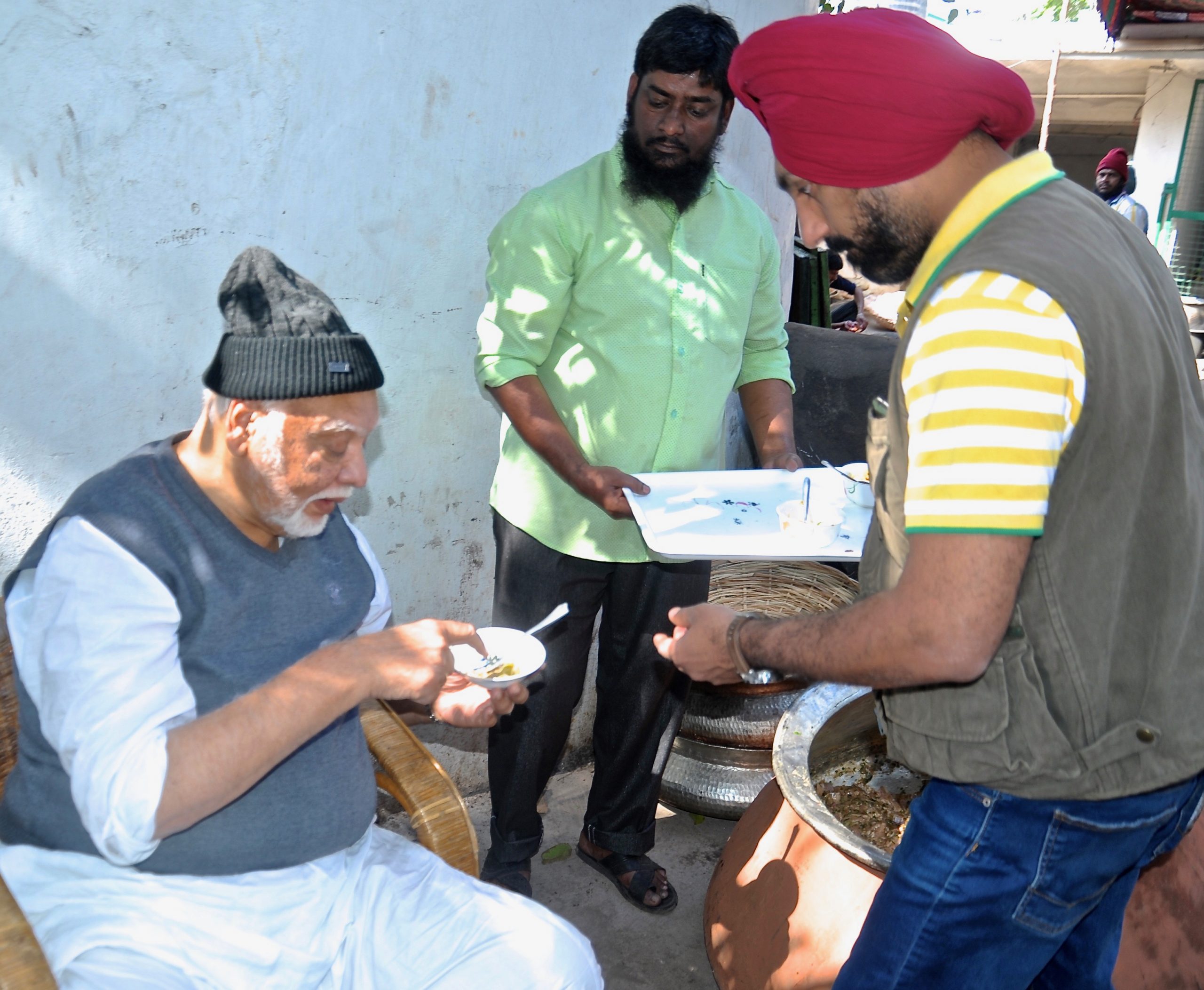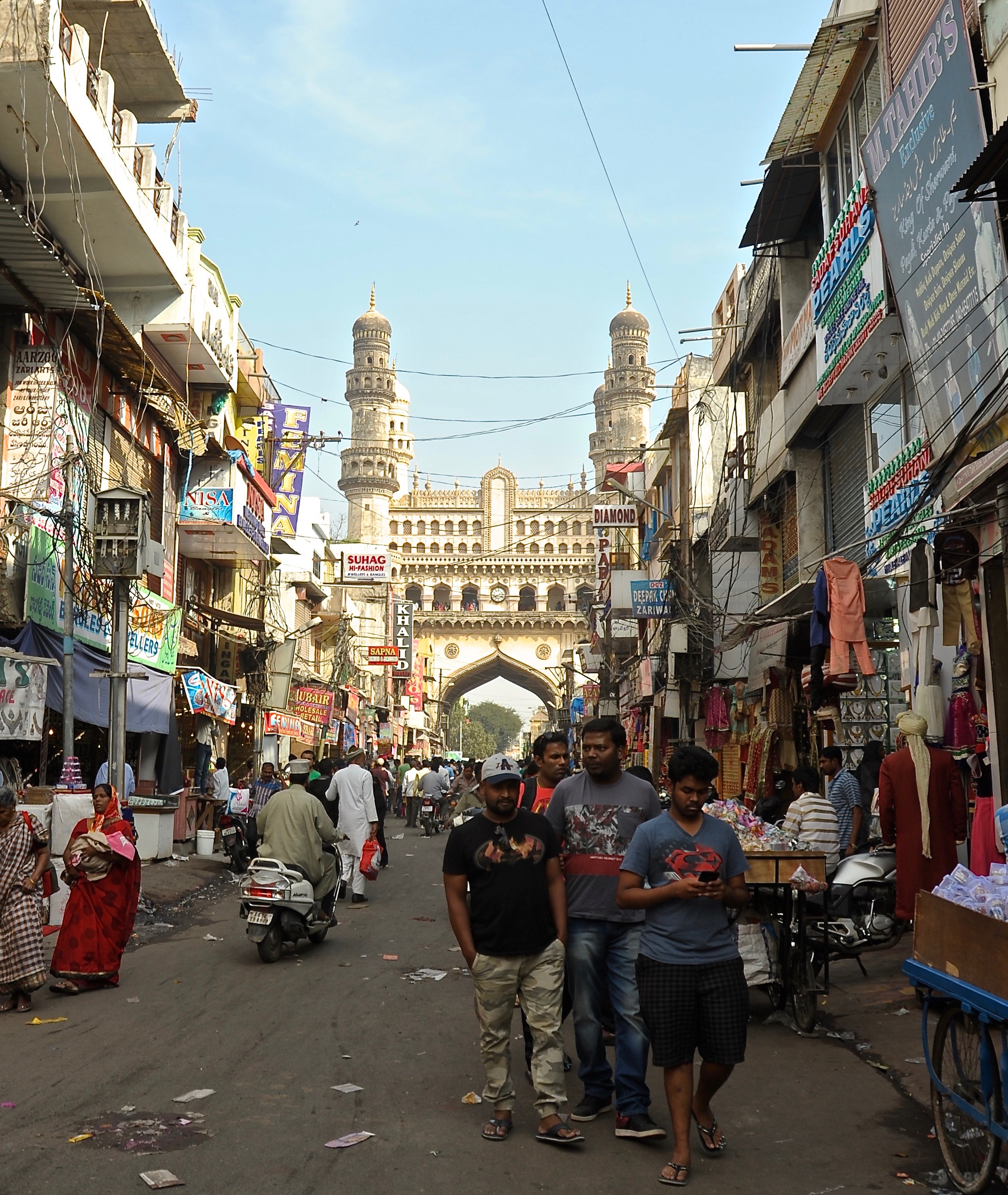Culinary Expedition to Hyderabad
Having been influenced a lot by the rich culture and tradition and with an obsession to know more about our varied regional cuisine, I decided to start my culinary expedition from the city of the Nizams, where cuisine and its skills were treasured as pearls and emeralds.
To get a vivid understanding of the subject, I walked the state libraries and went through a few books and manuals on this subject.
The journey to rediscover started with meeting the locals and listening to their never-ending stories, going to the little road side restaurants and spending the day in their warm and flavourful kitchens where the aromatic stew kept brewing for hours, and most importantly mentioning every moment spent with The Giant of Hyderabadi Cuisine, Nawab Mehboob Alam Khan, lovingly known by his peers and locals as, Baba.
Welcome to the Nizams City of Food.
Undoubtedly proudly known to be one of the top food cities of India. A gracious city with a rich old life style, Hyderabad as a city will always remain unique, despite being so far south, yet many cultures from other parts of the world have influenced its life style and the excellence of its cuisine.
Hyderabad’s four century young history clearly shows cultural influences that have come together in the creation of a distinctive culinary art where local Telangana community, Persian, Qutubshahi culture, Mughal sensibilities of Asafjahi, Abyssinian soldiers as well as the states boundaries over lapping the territories of Odisha, Karnataka and Maharashtra have all contributed to this rare and harmonious mix.
Legend has it that Hyderabad was first named Bhagyanagar after Bhagyamati, the consort of Md. Quli Qutub Shah, when she came to be addressed as Hydermahal after her marriage, the city was renamed Hyderabad. Hyderabad produced leading painters, poets, craftsmen, builders, musicians and architects who build beautiful palaces.
In the emerging British Empire, Hyderabad acquired neo-colonial style polo matches, club dances, tiger shoots, fabulous banquets for the British and the Indian royalty. Mohammed Saki, a minister of Aurangzeb had to say about the city said: “It is a resort of heavenly peace and worldly comfort to the human body, its population is even larger than a human mind can think of, its buildings are even loftier than the human intellect can imagine, its air is so refreshing and the flavour of the fountains so sweet and its verdure’s so pleasant and invigorating that the flowers and its vegetation of this land may be compared with glitter of ruby and emeralds.”
However, Hyderabad is today another chock-block city of India, 5th largest to be precise. It’s the capital of the Telugu speaking state of Andhra Pradesh, people now impatient and in a hurry, disturbing the somewhat laid back life style. The character of the city today is changed, bringing a considerable contrast with the slow and elaborate life style treasured by older Hyderabad. Hyderabad is India’s most rapid growing cities in term of technology with the coming of Cyberabad. Yet one thing shadows every other aspect here, the “Daawats”, royal banquets of Hyderabad.
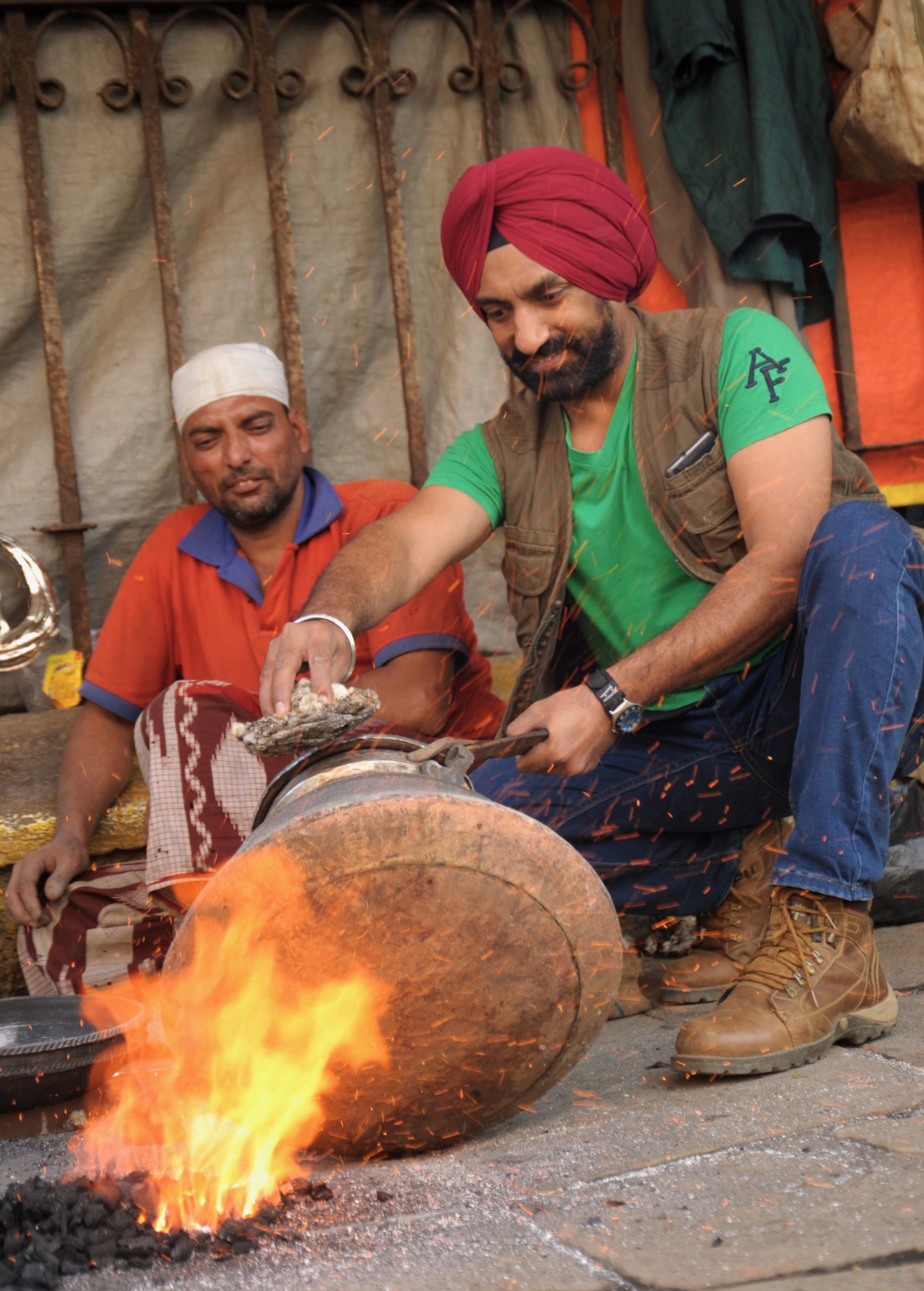
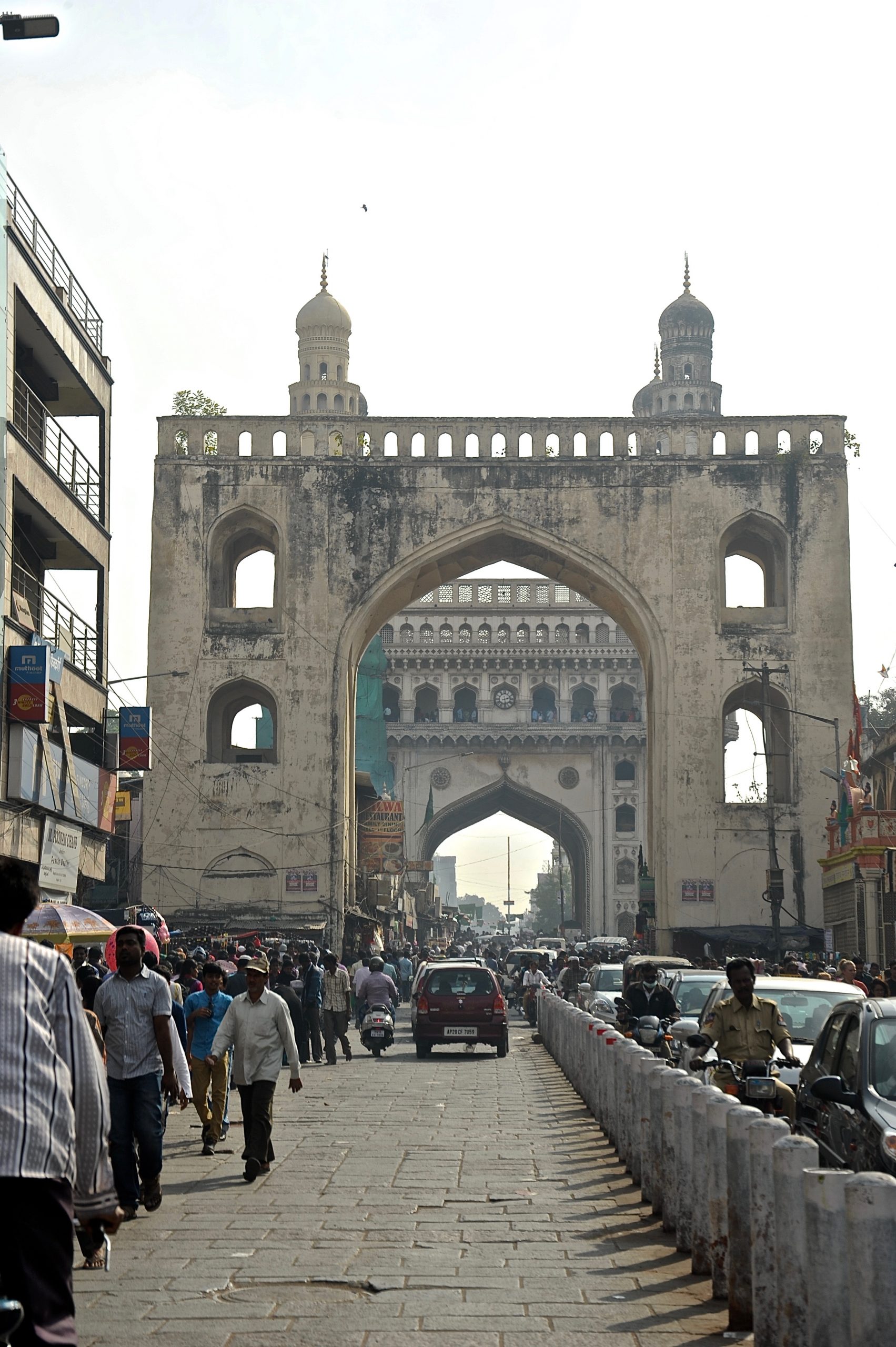
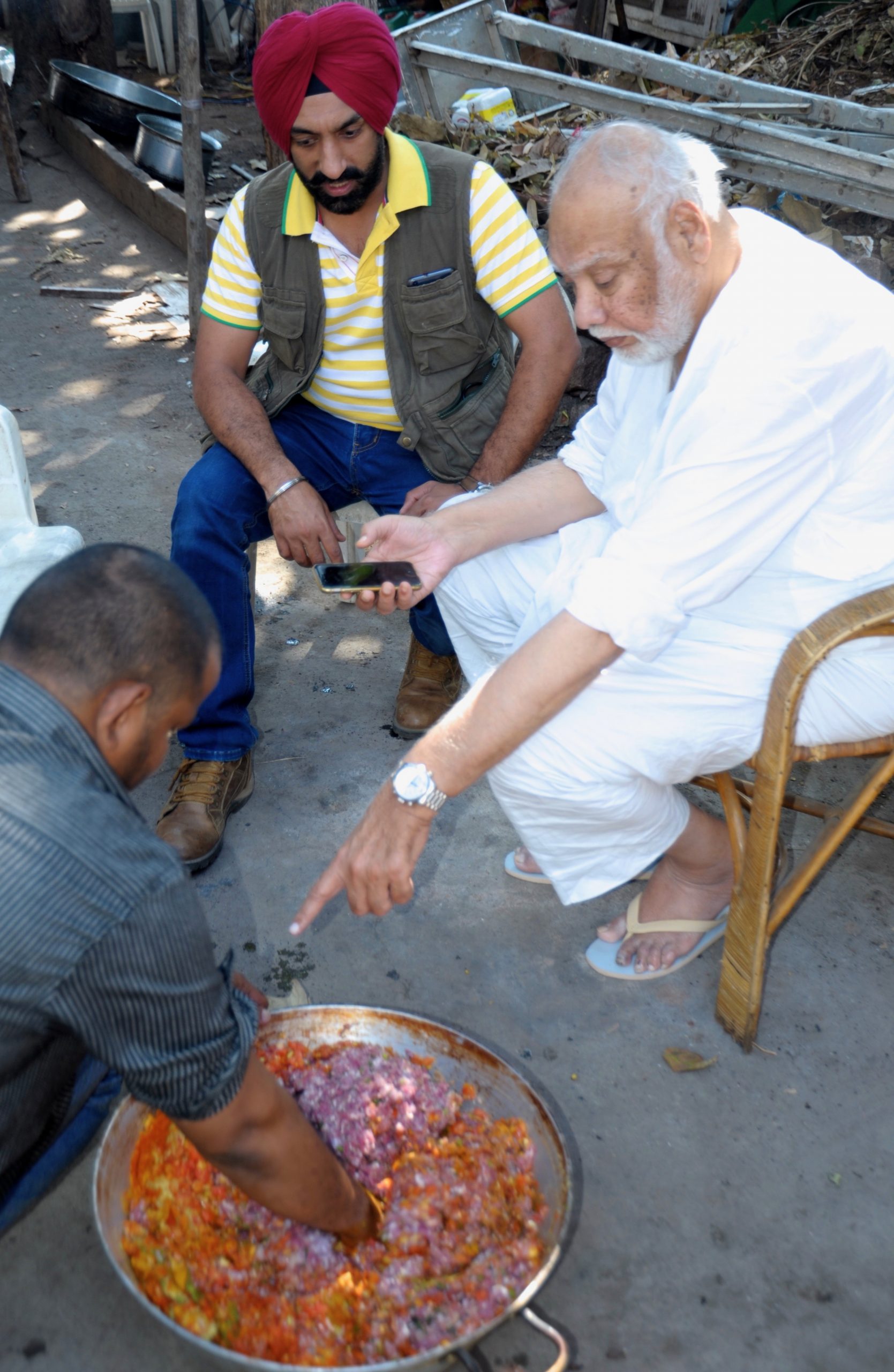
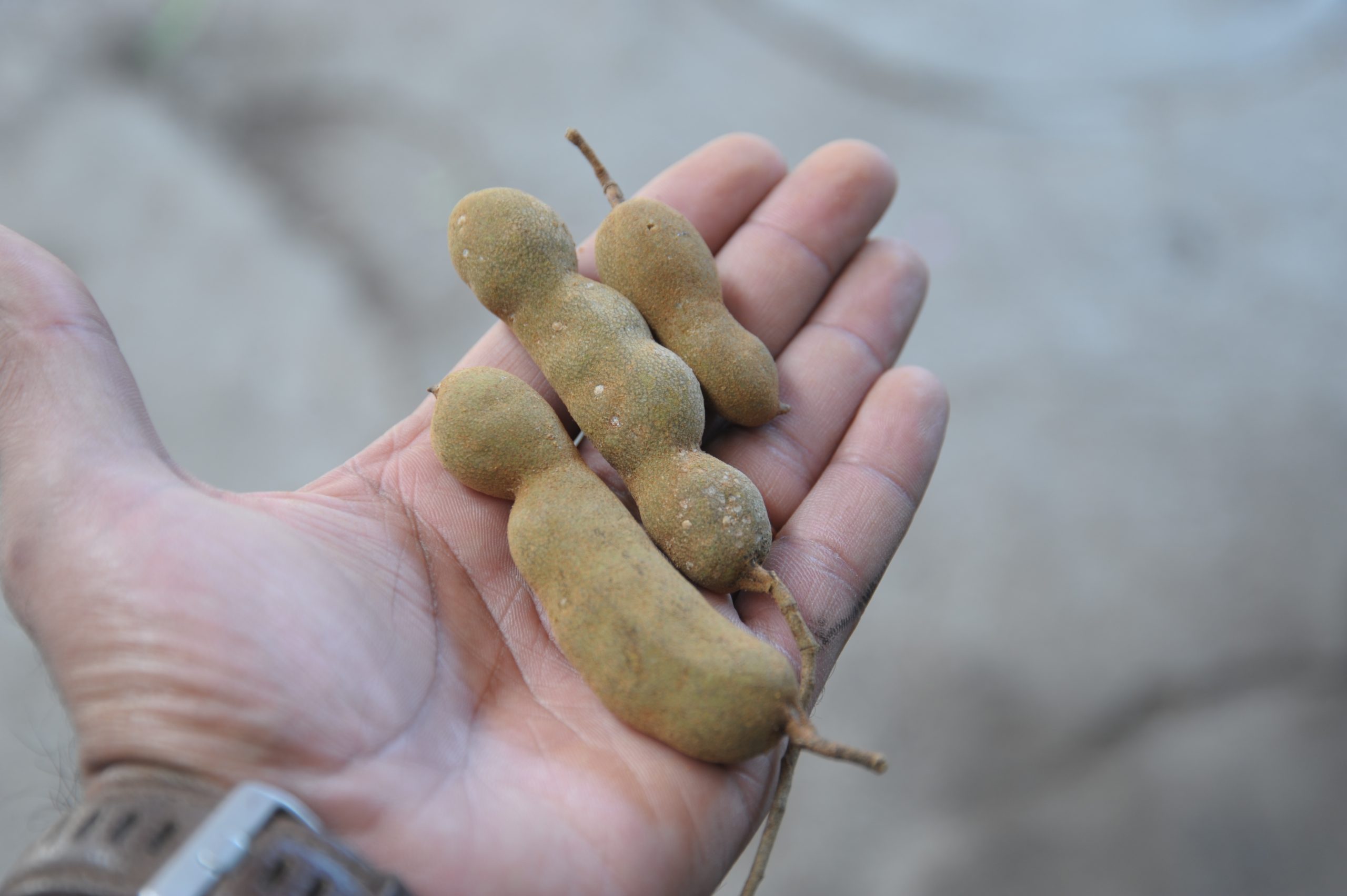
Rediscovering Hyderabadi Cuisine
I Left for Londa, close to Goa where I was working then, to board the Rayalseena Express which terminates at Tirupati. Being the only train to Hyderabad, I guess it was a comfortable 16 hours journey, only to excite me when it reached the princely state of Bhagyanagar, later known as Hyderabad. I reached my destination at 10am and checked in to a comfortable lodge thankfully organized by Mr. Vir Vijay Singh, the then Area Director of the Taj Group of Hotels, south India, situated at the Banjara hills, once occupied by the banjaras, the nomads during 1580’s.
I decided to start my research from the Golconda Fort which would give me an idea of what this place was like then, as well as helping me relate to the gradual change of today’s current situation. Situated on a hill top, Golconda stands outright. Mr. Abdul Hassan, a govt. recognized guide, showed and explained to me every single thing in detail to great extent; the secret route and the tunnel to escape to Charminar, which the king and his immediate family could use in times of danger to their lives.
In earlier times, population tended to congregate around a ruler and the subjects preferred to live within the confines of the fort as it provided them with security against invaders. Golconda – gola and kunda, which meant shepherds hill, was originally made of mud by the Kakatiyas, the king of Warangal in 1143. Later Sultan Quli, a Persian adventurer refurbished the fort with stone and it took him 62 years to complete and set up his dynasty, the Qutub Shahi Dynasty, which lasted for 169 years, 1518-1687. One of the iconic touristy places is the Hussain sagar lake, built in 1562, which adores the City of Hyderabad even today.
It is also believed that the author of The Arabian Nights was inspired looking at the glorious cultural personality of Golconda. The acoustics here are worth experiencing, a mere clap of the hands at the entrance of the court can be heard very vividly at the balasaar, the highest point. With the fort getting populated, the need for expansion came up and simultaneously, Sultan Ibrahim’s search for richness also came in a big way. The Kullur region not too far from Krishna river started pouring in diamonds and Golconda emerged as the centre for the diamond trade soon after this. The legendary Kohinoor was discovered, which has changed many hands now with the British Queen to be the part of her crown.
Golconda was undoubtedly one of the greater fortresses of India, impregnable even against the might of the Mughal emperors. The only way to conquer it was by treachery and bribing and so it worked. The Qutub Shahi dynasty came to an end, the king was taken prisoner by Aurangzeb. He appointed his governor to take over the charge of Hyderabad and the title of Asaf Jah was awarded to him. It was also at this time when the British, French, Dutch and Portuguese had set up large trading houses in the south. They came up with superior technology and it didn’t take time for the Mughals to succumb to their pressure, eventually Hyderabad became a British protectorate and a British cantonment was established named Secunderabad, after the Nizam then Sikander Jah.
It was at this time when all the ways to lead the colourful life style began, for all they did was to carelessly spend their rich resources. Mir Osman Ali was known to be the richest man in the world. They ruled for 224 years until 1947 when the time ran out for the rulers and Indian Princes. Appropriately, Hyderabad had been named after the beauteous “Hydermahal”, a Hindu lady, wife of Md. Qutub Shah, there is indeed something delicate and feminine about the culture of the city. Old Hyderabad has its own identity; very laid back, easy and leisure are the words for it.
There are still people who do nothing but savour every moment of their idleness. It is said that no Hyderabadi then died of ambition. Here the cultured style developed in which courtesy and refinement permeated every one’s life regardless of status. Even today one can savour the genteel manners and exaggerated social graces. Greetings are still exchanged with low bows and the words drip with grace and elegance.
The old refinement was evident in various facets of life for instance, Hyderabadi’s have always shown a marked incline for things white in their lifestyle, may it be Pearls or diamonds. Gold was considered too loud. Holi, the festival of colours, was played best with flowers like jasmine and rose instead of powder colours today which are mostly not natural. Liquor was really not considered a taboo, here they made it from flowers, fruits, seeds and even meats. They had it in a thumb size silver cup called Finjaan.
It was quite an educational tour which lasted for over three hours to cover everything in detail. It had many more interesting facts, I guess one needs to be there to experience it in order to believe it.
It was about 5 pm on Friday, I was advised to visit the Charminar as it was also a Jumma raat, considered pious by the Muslim’s. Charminar was built by Md. Quli in 1591 in tazia style, after the sacred symbol that shia Muslim’s carry during Mohharam. It was made of lime, mortar and coated with plaster which included whites of egg to give a smooth and creamy finish.
A colourful bazaar has now evolved all around Charminar, with lots of antique jewellery, perfume shops called “Itr” shops, bangles, flowers, kites & “paan”, a wrapped betel leaf mouth freshener shops, on one of the street even remain today.
There are also shops which make gold and silver sheets unbelievably thin – called, “sone aur chandi ka vark”. These thin sheets of gold and silver were used to embellish several Hyderabadi dishes. They are manufactured by a process in which thin slices of gold and silver are sandwiched between leather pads made of deer skin and pounded with a hammer – approximately 10 gm of silver can make about 150 sheets of 6 inch square. They are packed between paper sheets and sold at a pretty high price in the market.
The obsession with fragrance was intense, every visitor to a home would be offered itr, an oil based Indian perfume essence which would be dapped lightly on the back of the hand and rubbed, leaving a lingering scent for several hours. Homes would be smoked with “loban”, a resin, every evening. In the absence of today’s hair dryer the women would spread their hair over a perforated clay pot or a basket placed over a scented embers with the smoke.
A self-proclaimed, road side doctor here, claims to have a cure for any disease or illness and believes in medicinal properties in things like the porcupine spikes, elephant skin, powdered pearls etc… now rare.
I landed up there making it more than a visit, working there over night at this well-known eatery named “Bismillah”, just to watch how the evening goes till the wee hours of the morning. To my surprise here they sold more than 400 portions of Nihari, a stew of lamb trotters and tongue, served as a breakfast food with local bread called Kulchas. They garnished it with fresh mint leaves, fried onions and lemon wedges.
Another interesting dish well accepted here is Chakhna which literally means, to savour the taste. Made of the offal’s, intestines and all the body parts one can think of, this was indeed delicious, but fierce and flavourful. It goes best with local toddy. This is only served at a few places, but can be had only between 12 noon and if lucky 2 pm, or one needs to try the next day as it happened to me.
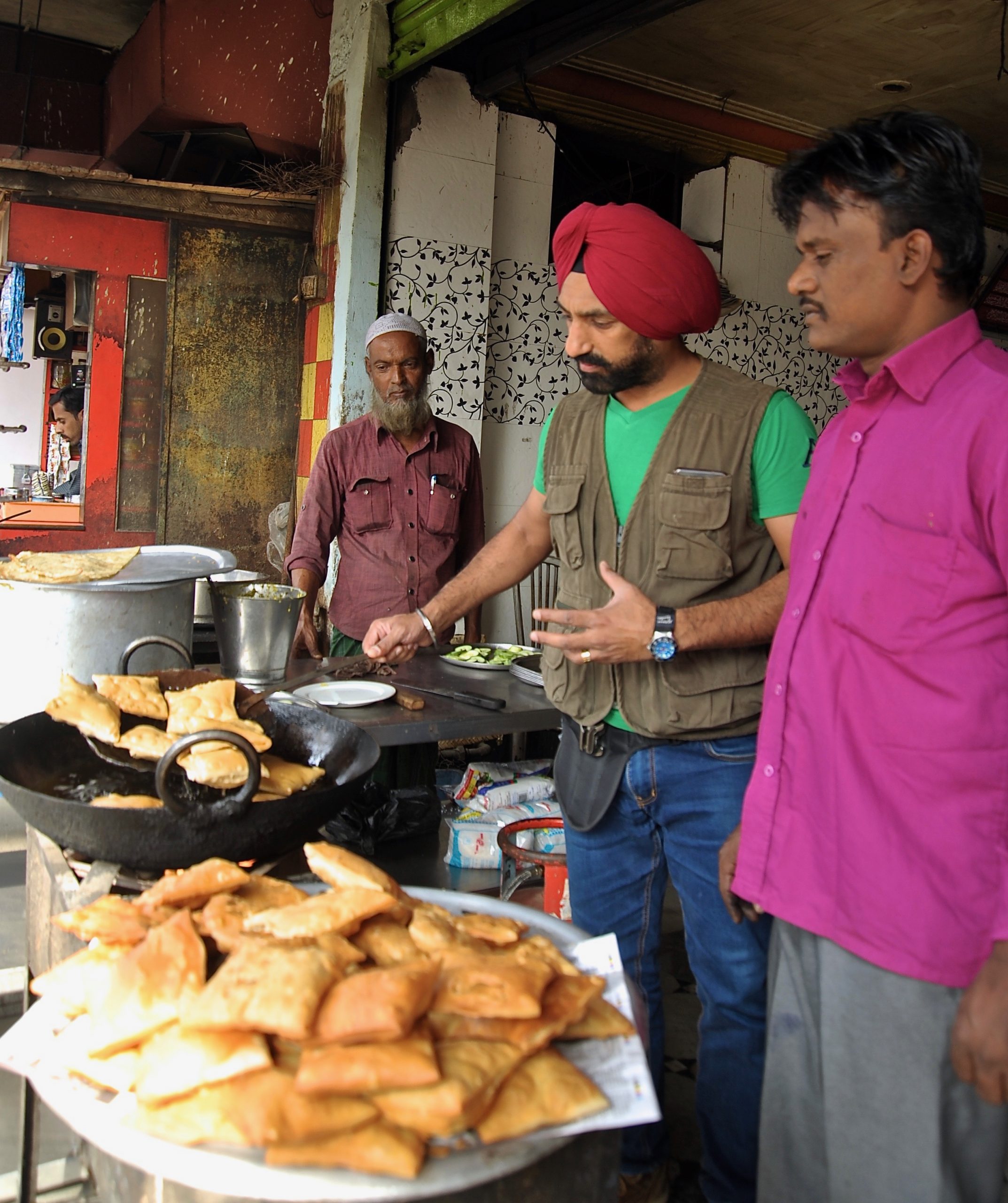
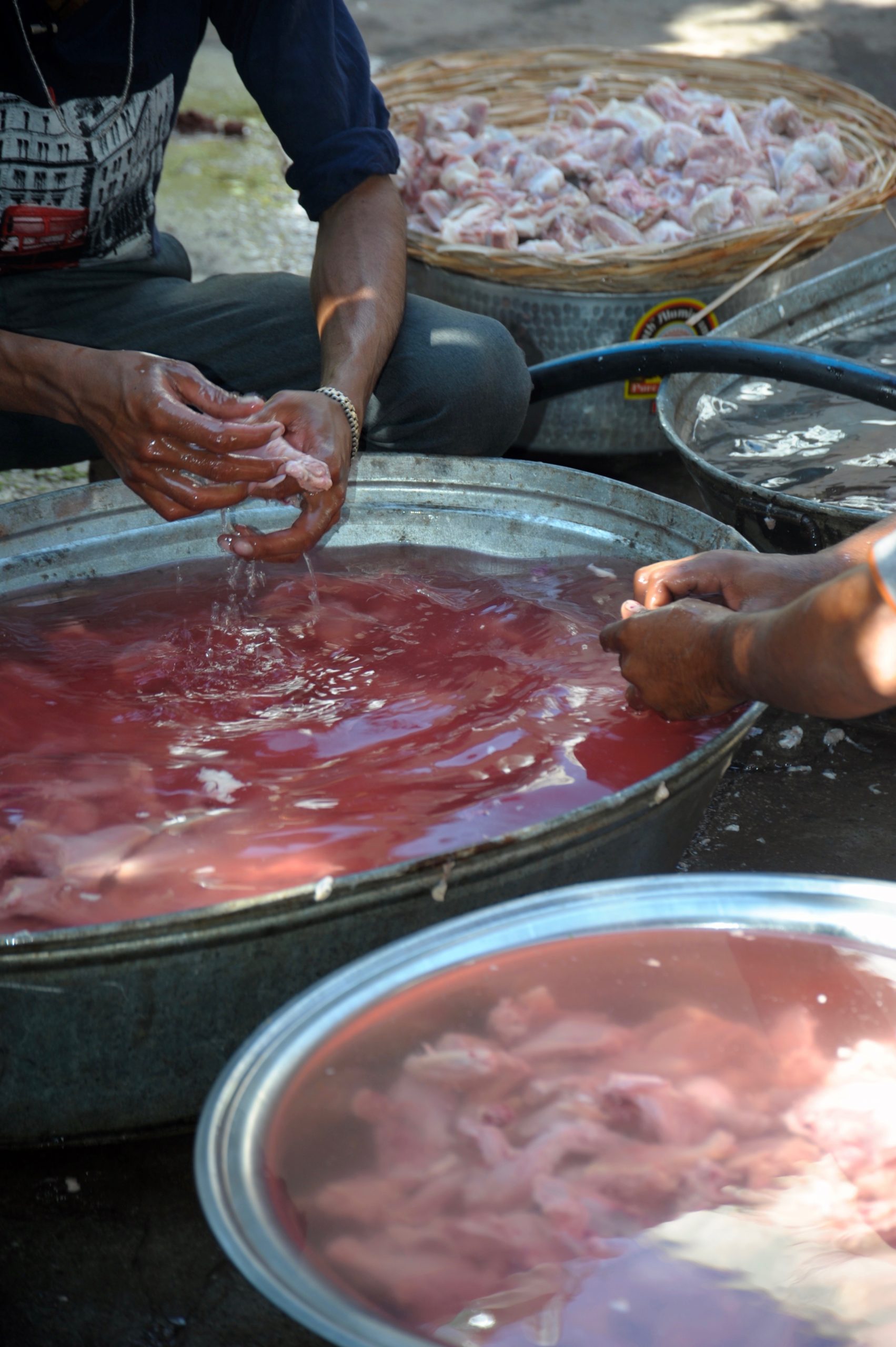
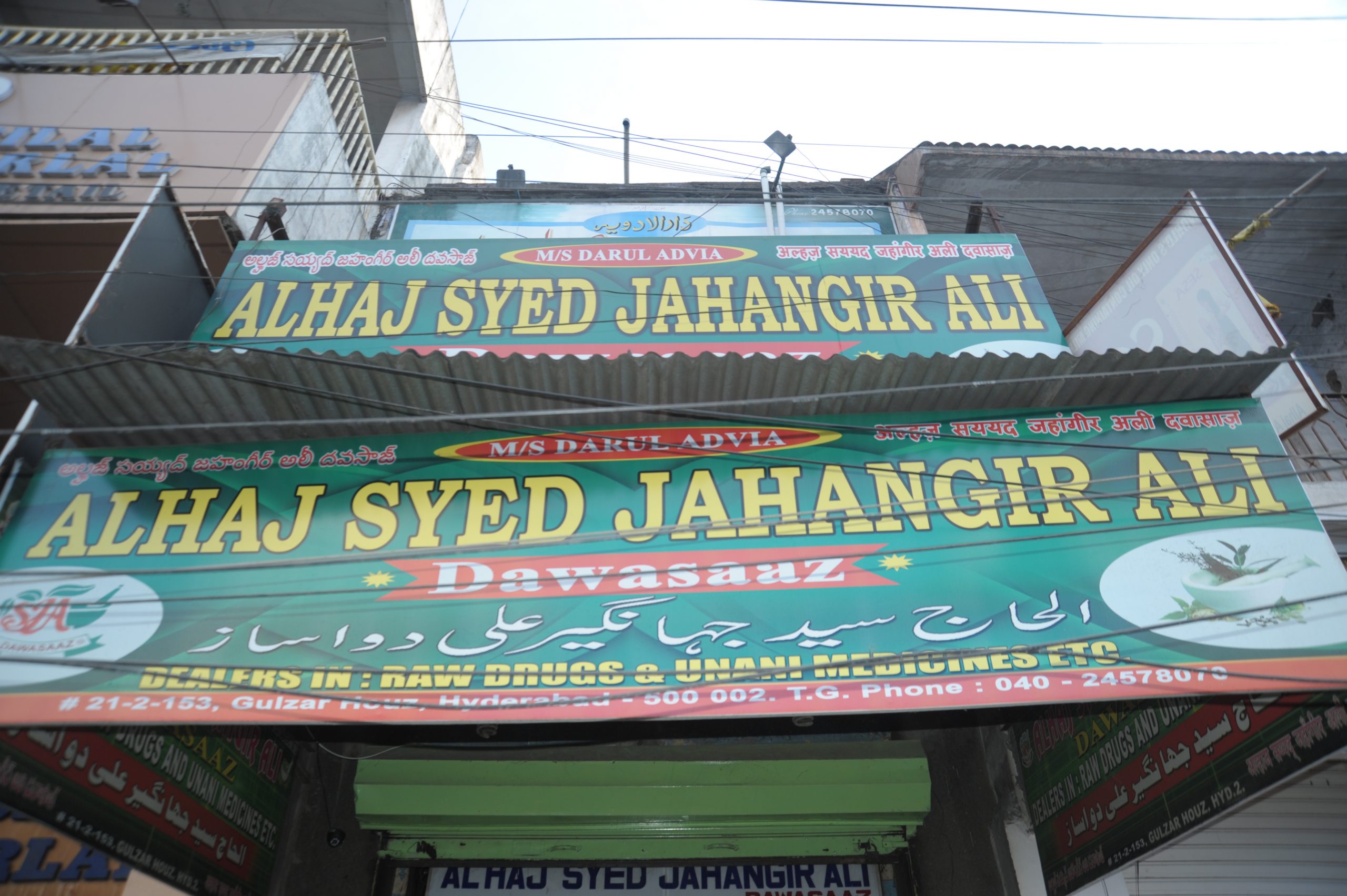
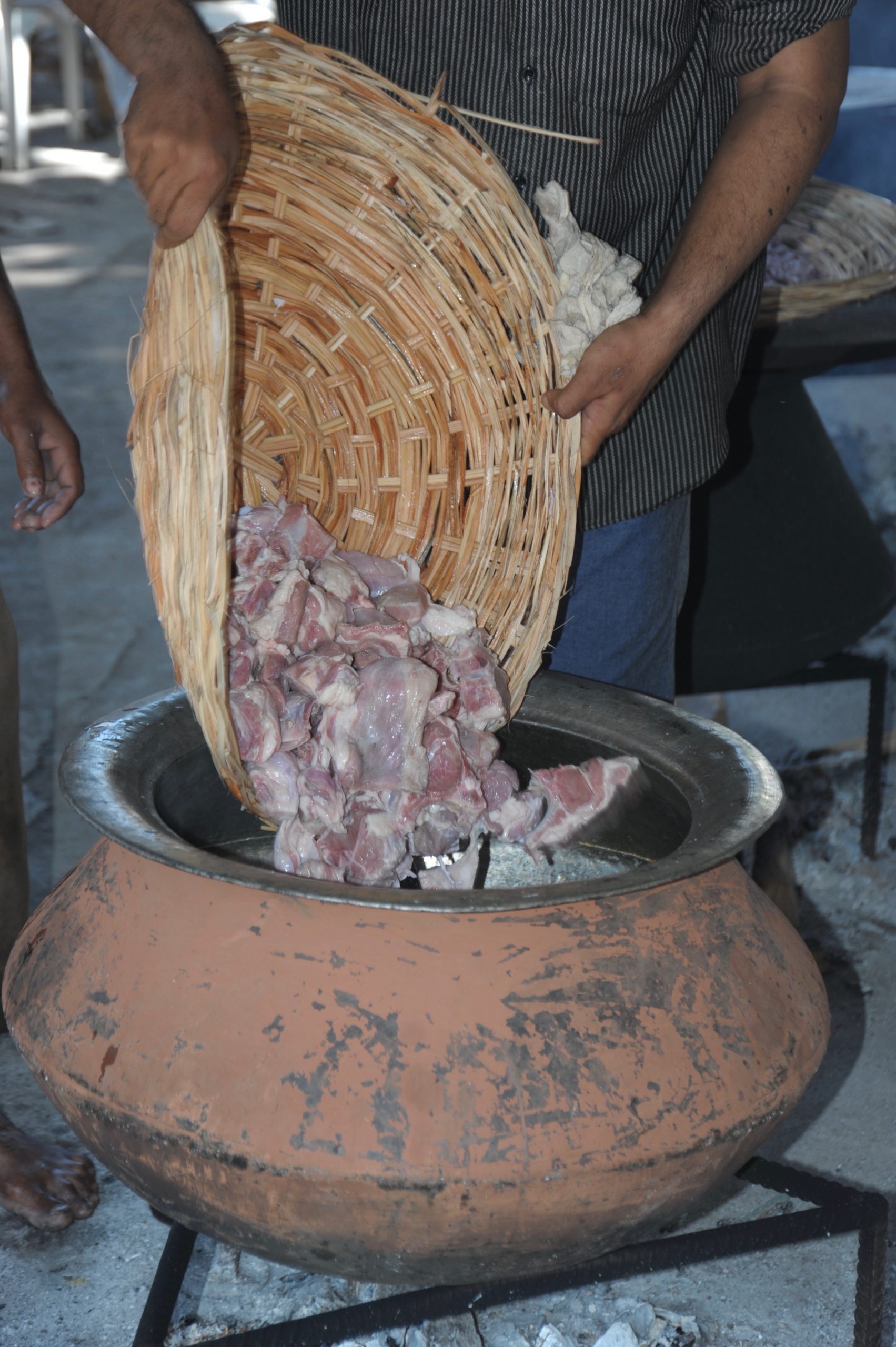
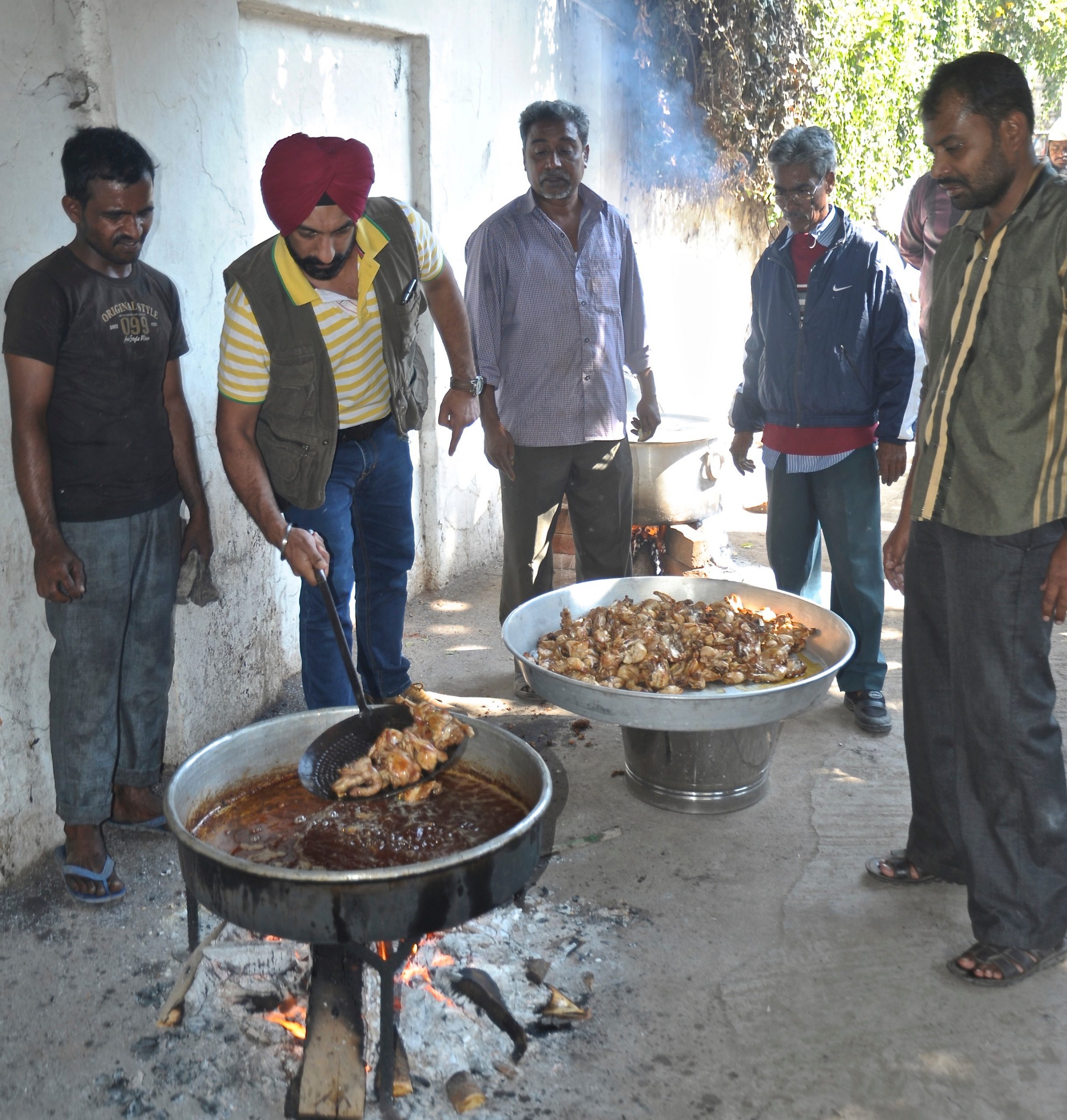
Later on in the day I met chef Banja, the Exec Chef of The Taj Krishna, earlier known as the Krishna Oberoi. Interesting facts arose from the discussion that I had with him, such as why the cuisine here is so spicy and why the importance given to chilies here is so significant. The northern part of the state was less fertile than the south where the Krishna river meets Godavari river. At this point the soil was indeed fertile with lots of vegetation around. The people of the north lacked the luxury of fertile lands and thus resorted to substitute the main course with some relish or pickle to go with their staple, rice. It was either hot and spicy or had a perkiness which would tingle their palate and so their cuisine took the hotter route. Another dish which was very popular amongst the locals was the Chicken 65. It is believed that someone dared to consume 65 of the hottest chilies with this chicken preparation and thus the name was born. Also, due to the abundance of tobacco cultivation and the local consumption of tobacco, their palate and taste buds often became numb and so their tolerance to consume high scoville hot food was rather normal.
Legend, not quite apocryphal, has it that on his way to the south, Asaf Jah Nizam-ul-mulk, the governor of the state, broke journey to pay homage to a Muslim saint. The seer offered him a typical bread called Kulcha for his meal. When he finished his 7th bread and couldn’t eat any more, the saint blessed him by declaring that his family would rule the south for seven generations. He took it as a gospel and literally made the Kulcha the family emblem and even adorned it on his flag.
Hyderabadis spend endless hours discussing and fussing over food and it is therefore treated with a lot of importance. It is said that Hyderabadi eats food to savour good food and not for surviving or better health. It’s also believed that Osman Ali khan, the last Nizam of Hyderabad would write the menu daily for himself and the entire palace including the servants; it was a “farmaan”, or the royal command.
The lady cooks and the wives here are much less fussed about their culinary skills, for they possess a magical ingredient called emotion. They say that best food comes with “fursat” i.e, leisure; and “mohabat” i.e., love.
In older days it was considered inauspicious to sell food but of course now with the coming of industrialization, in every city road side eateries are doing exceptional business. Its normally Ramadan, the austere Muslims month of fasting which invites considerable culinary activity in Hyderabad. Road side eateries serving delicacies spring up almost everywhere.
Nihari: A thin stew of tongue and the trotters of lamb which simmers for a whole night is served for “sehari”, before dawn. It’s a typical breakfast food had with kulchas, fried onion, mint and lemon.
Haleem: stands for the “iftar” or in the evening, which is when the fast is formally broken. It is a wheat and meat preparation cooked together until it becomes mushy and thick, like porridge.
In the earlier times throwing large events were quite obligatory. Along with flowing wine, there would be “mujra” dancing girls who wore flowing costumes and coquettish in her gyrations, but what the guests really looked forward to was the food. It was much talked about even before the invitations were sent out meaning that expectations ran high. The origin of Hyderabadi food is quite simple, it’s a confluence of varied influence, Indian and foreign. It blends the class and refinement of the north together with the spices and the perkiness of the south. The intermingling of the aromas, flavours, fragrances, tangs, textures and colour have resulted in a highly seductive kind of cuisine. A strong influence of Telangana on the “Nawabi” royal Hyderabadi cuisine has made it more welcome.
It’s believed that no one can sour his food like the Hyderabadi can. They use lemon, tamarind, yogurt, tomatoes, vinegar, raw mango pulp as well as in a dried powdered form, citrus fruits, tender shoots of tamarind called chugur, sour spinach called ambada or roselle leaves, sour berries called karonda, sour fruits like bilamboo or halfaleori and kaamrak called the star fruit. Souring enhances the taste of the food and is said to be good for the heart and aids digestion.
Hyderabadi style of cooking predominantly is “bhagar,” a procedure of tempering, “dum”, steam sealed, “achar”, pickling and “talna”, frying.
Herbs and spices are the glory of Indian food and India proudly has them in abundance; each herb and spice with its own subtle fragrance, flavour and medicinal benefits. The usage of spices differs from region to region here. Due to Muslim influence, the spices used are caraway seeds, poppy seeds, sesame seeds, muskmelon, watermelon seeds and cassia buds. Spices are to be handled with care and roasted to the right hue, lest you want a bad taste, so its advised that the spices are tied in a muslin cloth and simmered in a dish for it to ooze out its flavours.
There are two main magical spice blends here – Bhojwar and Potli masala. Bhojwar masala is used in dishes like baghare baigan – seasoned aubergine, mirchi ka salaan – green chilly curry, mahi gosht – lamb dish, and it contains coriander, cumin, sesame seeds, peanuts, bay, lichen and coconut. Potli masala, has a literal meaning of a small pouch of muslin cloth tied for a French “bouquet garni”. It has approximately 32 spices. Some are exotic and indigenous and are available only around this place such as, sandal wood powder, vetiver roots, paan ki jadi, kapur kachri, munsari ka phul, to name a few etc. These are basically available at the hakim shops – dealers in allopathic, ayurveda, naturopathy shops.
Like in the west, there is a certain order in which the food is taken. Hyderabad food is eaten in courses but not served in course, everything is placed on the table.
First to be had is a dry dish generally called Gazak as an appetizer. This could be kebab or a dry fried fish or “lukmi”, a bite or morsel of meat stuffed in a salt paste dough and deep-fried on a slow flame. This is followed by “khalia”, a semidry mutton curry served with “phulkas”, breads. Then comes “shorva or khorma”, a thin mutton or chicken curry which is generally made with vegetables in them. Followed by biryani, there could be greater variety of each.
Though for the desserts, time honoured favourites are – “double ka meetha” fried and soaked bread in condensed milk, “khurbani ka meetha”, apricot halwa, “doodh malai poori”, a bottle gourd dessert, “badaam ki jail”, a local delicacy.
Traditional vessels and equipment’s which make this cuisine so special:
- Earthen pot: gives a fragrance, which a parched earth gives in the first flush of rains.
- Degh: a broad base and a narrower neck vessel made of copper and galvanized, its sheet is quite thick and sizes vary, use for curries such as biryani, kurbani ka metha, etc..
- Lagan: a round shaped vessel with a flat bottom, generally the side walls are max one feet and diameter five feet, available in smaller sizes also. Used so that its contents spread and cook evenly.
- Kabgeer: a long handle spatula generally five to six feet of iron or aluminium, with a rounded end unlike a rectangular spatula, use to stir and toss the food items in the lagan or the degh.
- Sigdi: an iron grille fired by coal or fire wood.
- Kadahi: a thick iron wok to fry, stir fry or roast dry ingredients.
- Pather: a deccan granite stone slab used to cook meat when made hot over coal, infuses certain earthy smell.
- Tatee: a stand made of interwoven strips of metal to barbeque thin slices of meat, replacing char grill.
- Dora: A large ladle of iron or aluminium required for stews, lentils, curries.
The traditional and the authentic way of having a meal here in Hyderabad, is called the Dasterkhawan, which means to seat the guest on a low-lying cushion and the food is then placed on a low placed table called the chownki. The whole set up looked beautiful, very comfortable, contrasting upholstery with the crockery and the “daster”, the table sheet or the satin underlines.
I opted for a choice of items in a single thali. The refined word is a “khawan”, which is a large, round silver plate, which sits about ten types of dishes. It is covered when it’s brought out and the lid of the round plate is unmasked only in front of the guest. This does indeed feel special, and more over it takes us through the vast cuisine Hyderabad has to offer as well as being good value for money.
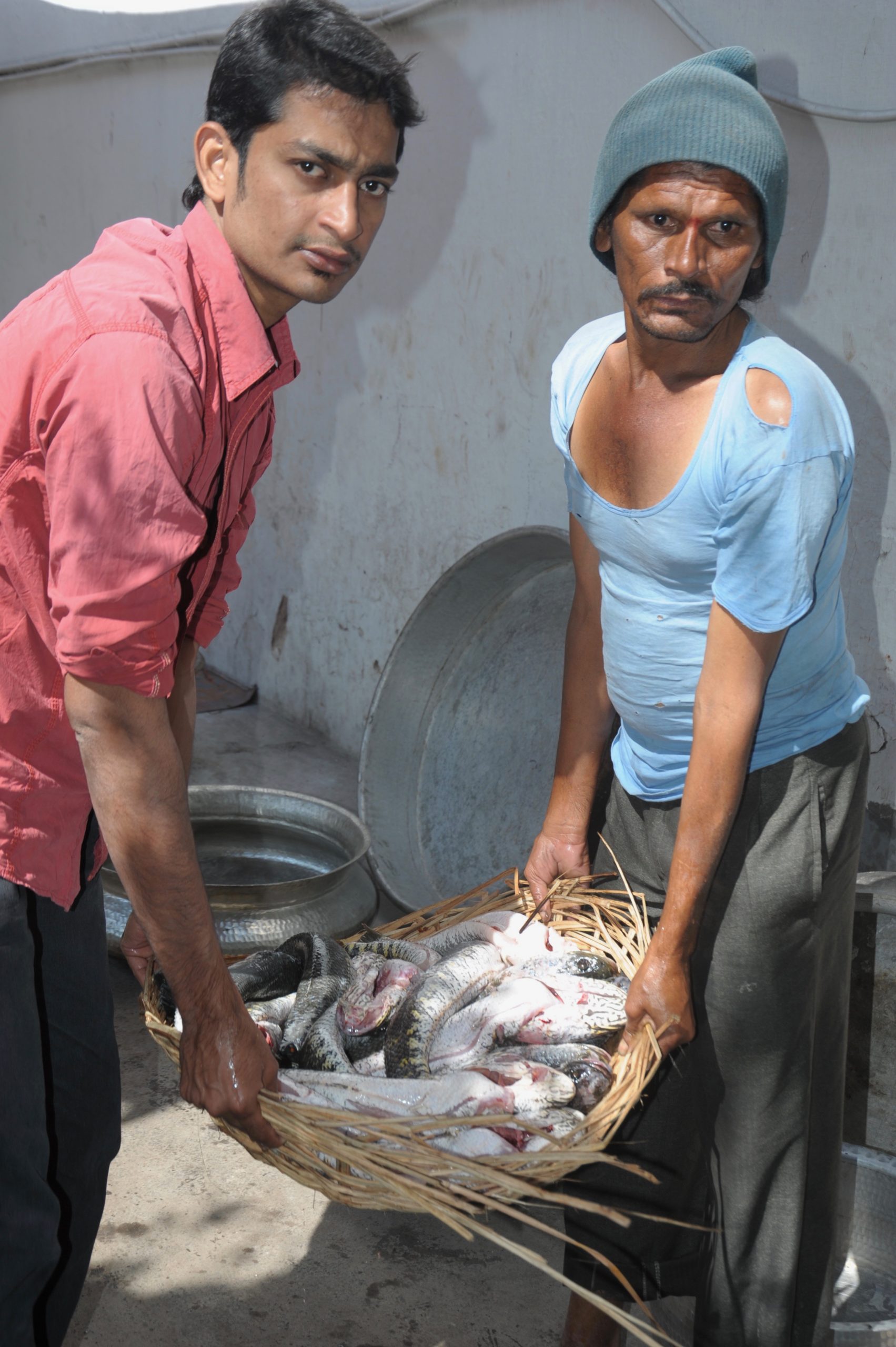
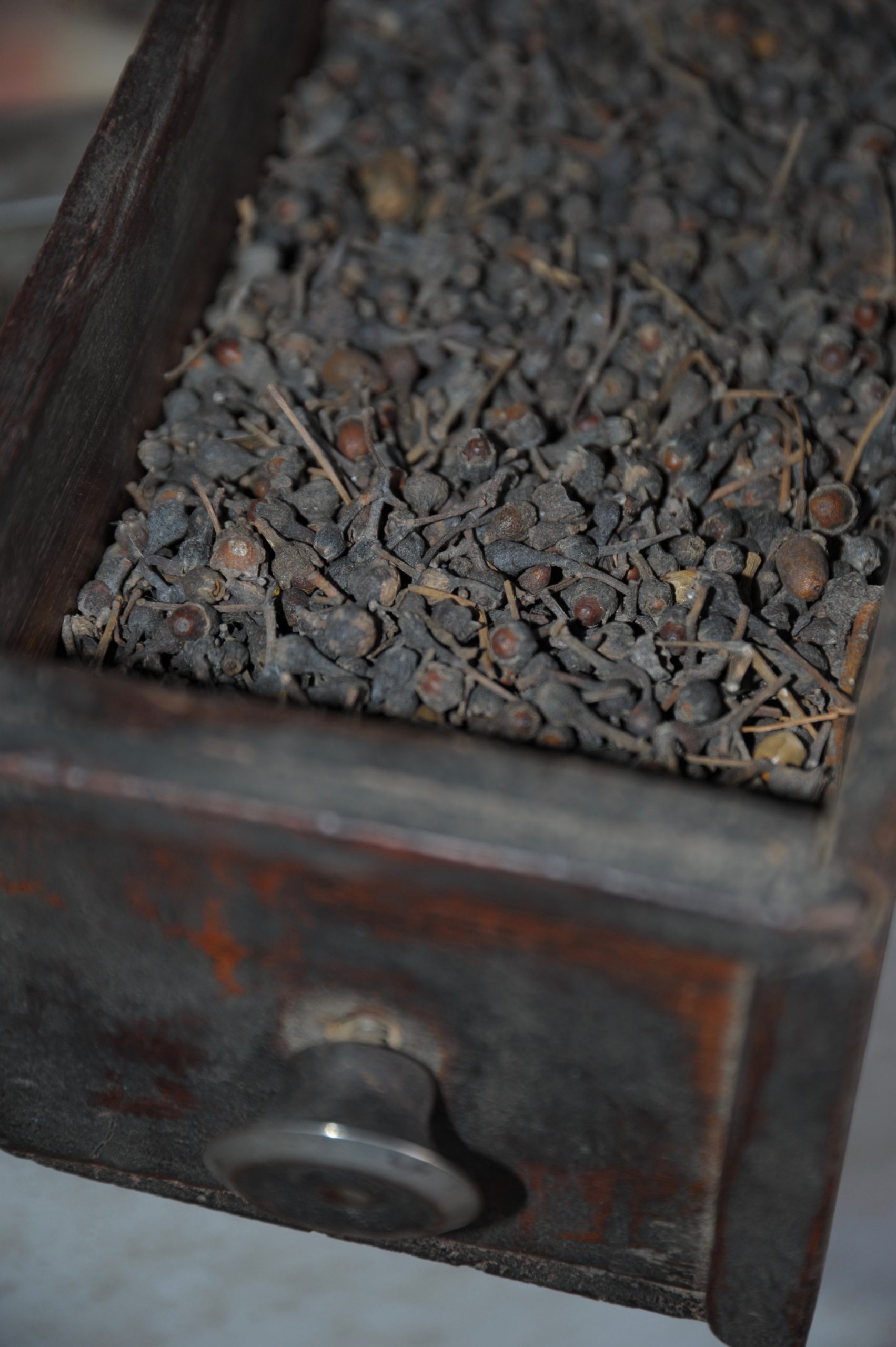
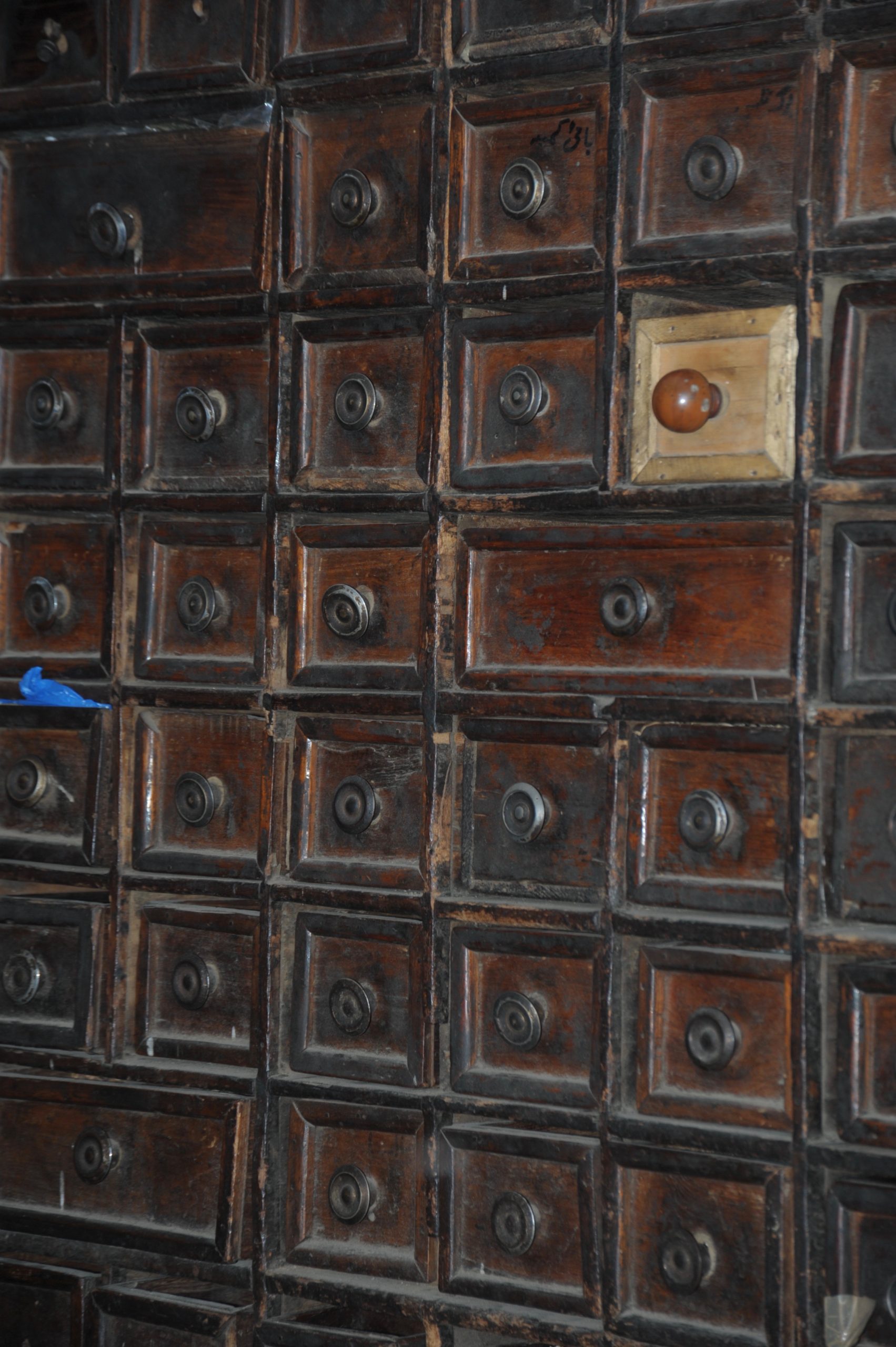
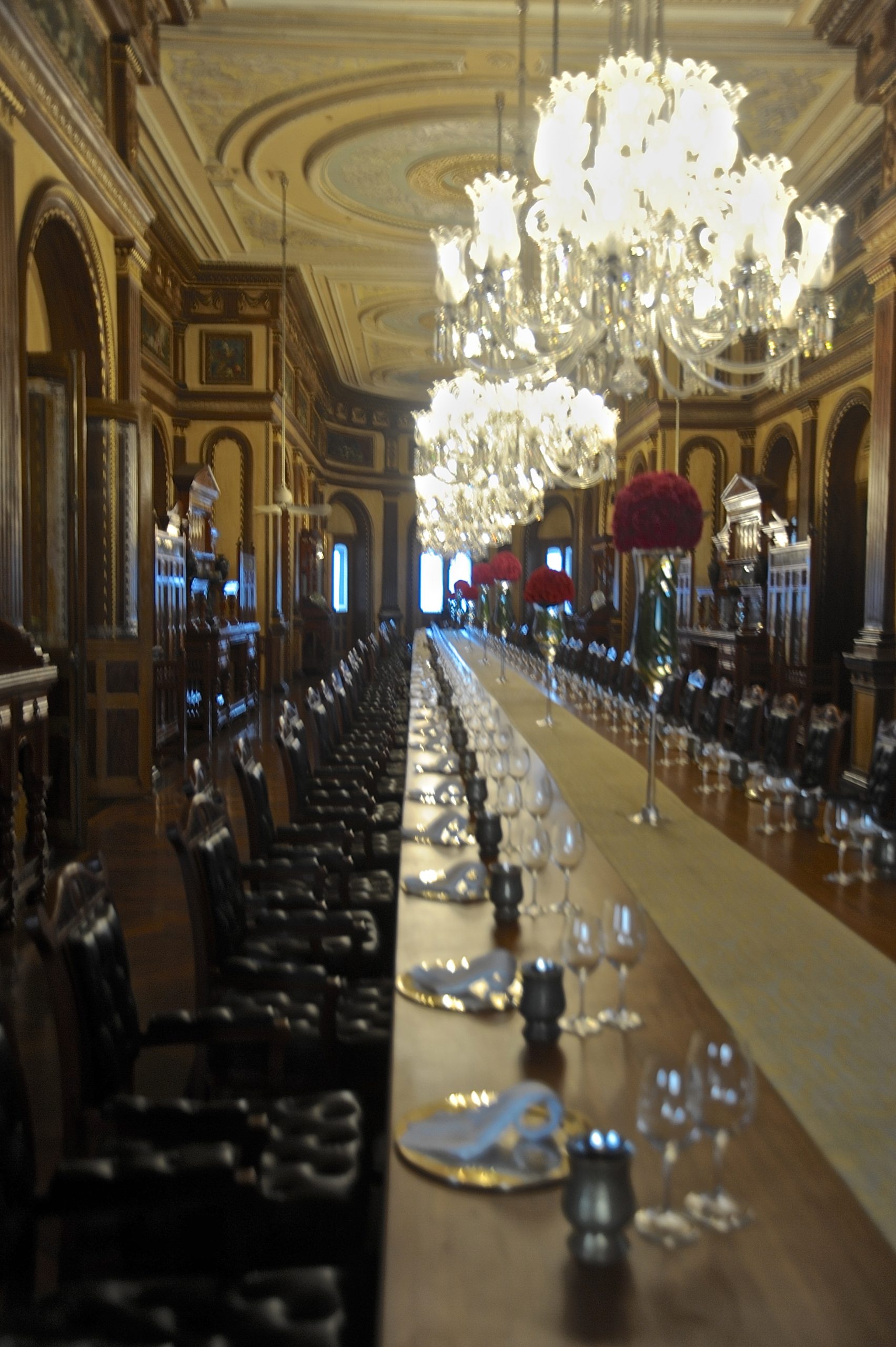
I met up with the chef who whipped up this wonderful meal for me and as we got talking in his own words he sadly explained that, “mar aye khanae walae, aur mar gaye pakane walae”, meaning that, “very few people who really love and understand food are alive in today’s world, and the cooks who could cook food with love and emotion are almost getting extinct”
We had a wonderful discussion where the chef emphasized on the quality of ingredients he uses and the different methods of cooking. I strongly feel that these are the real deal for an awesome dining experience. The much-awaited delicacy was arriving, “marag”, a thin flavourful stock, very rich in nutrients and served with a chunk of tender boneless lamb shoulder. Following this, it was the khawan, an elaborate dining experience which comprised of saag, muragh achaari, burra gosht, haleem, varki parantha and the most talked about zaffrani gosht biryani.
There was literally no desire to have any dessert, for I had no space left, but for their insistence no one could deny having the stewed apricot dessert topped with freshly churned “balaai” or the house churned cream. It was indeed worth a shot.
During my tenure at Hyderabad I came across a fine gentleman, Mr. Ahmed Ali, who then had a furniture business specializing in ethnic designs with great craftsmanship. He also has a catering firm named Lazeez, meaning delicious, and so it is. I happened to be invited to one such wedding, coincidentally being catered by him. I didn’t wait for an opportunity, but immediately asked if I could be present at the cooking site the whole time and, without any hesitation, he welcomed me for the same and expressed his happiness for having me.
I was to report to this “shadi Ghar”, wedding hall, at 9 am. Every wedding hall has a cooking area assigned on its rear, as it is mandatory that wedding halls would require a food processing unit in close vicinity for convenience and timely service.
The menu for the wedding of 400 pax that day was:
- Lukmi – a type of savory puff pastry, mutton mince stuffed, fried.
- Sheekh kebab Azam jahi – mutton mince on skewers cooked on dum.
- Dum ka murgh – served with uzbeki naan.
- Tala murgh – fried chicken.
- Dum ki biryani – Hyderabadi kachchi biryani of mutton served with dahi-ki chutni and baigan aur mirch ka saalan.
- Khubani ka meetha – Stewed apricots with balaai or home churned cream.
It was indeed a wonderful day as someone was getting married, and for me, it couldn’t have been a better opportunity to dig in to the cuisine know-how. Many observations were made; the traditional cooks go about processing food in the most original and ethnic manner, using firewood and utensils so huge that one needs to see it to believe.
As anywhere in any kitchen, it’s the preparation and planning which is given utmost importance. Almost half a day, maybe a little more for them to complete their extensive basic preparation, but appreciably everything was carried out in detail and with perfection, to the extent that every single aubergine that was used and slit was checked for quality.
There were about a dozen cooks in all and everybody was assigned a particular task, whether it was speeling and slicing onions for “barista”, golden fried onions for biryani and dum ka murgh or ginger and garlic paste for almost everything, young papaya skin paste for tenderizing the meats, deseeding overnight soaked apricots for the dessert and stewing them for a couple of hours, whole spices sundried and few dry roasted and powdered in a pestle and mortar, pastes of dry fruits and nuts like cashewnuts, almond, coconut, peanuts and seeds of poppy, sesame and melon, soaking of tamarind for the “saalans”, curries.
The freshly slaughtered lamb and chicken came in by 12 noon and they were all processed by 2 p.m. Hyderabadis don’t believe in any frozen meat, be it lamb, chicken or fish, meaning that it was all fresh.
It is believed that “baigan ka salan” aubergine curry tastes better the second day as it pickles and matures, although here it couldn’t be done on a previous day for certain reasons, but it could be prepared first and kept so that it matures by evening and to ensure that it is consumed at room temperature. The meats are all marinated and kept and only cooked a couple of hours before the commencement of the dinner as they need to remain hot. They do not reheat the food as it is believed to spoil the taste and the texture of the dish.
It was lunch time and all of the cooks took a break at the same time. One of the elderly cooks made some local delicacy for us: fried offal’s of lamb, raw mango and lentils & lamb curry- “dalcha”, boiled rice strained in a cane colander.
The whole experience was really a very memorable one. I was just guessing, that if the sort of staff meal for us was this good how about the one coming up…
After a little break, the final work for the dinner feasts resumed, the dough for mutton mince filling- “lukmi” was on its way. The iron tandoor is set up for the naans, unlike the clay tandoors that we cook the naan & roti in, and the dough for Kulcha had to be premade to be rested and to prove for later, water on back burner for blanching the rice for biryani and so on..
Dinner was to be served at 9 p.m., so the cooks put the biryani and the chicken on “dum”, sealed in its own steam at 7 p.m., so that it remains hot. The breads were also cooked and kept as its shelf life is a day, also as its leavened, it would remain soft.
The time arrived for the musical bands to sound followed by a jovial troupe of folk dancers when the bride and groom were led in to the wedding hall. This was the time when the food was to be served on the tables, covers of four and covers of six, all the food was to be kept at one time unlike we who have the starters followed by the main course and then the dessert.
It was indeed a wonderful experience to be associated with this catering team. The food, if any left, would be distributed amongst the poor and needy, or be taken to the homes of the cooks for their families and their neighbours.
The following day I decided to visit Mrs. Mumtaaz Pasha Khan, a renowned name here for home cooking. I was welcomed by her at her residence where she generally conducts her practical lessons for whoever’s interested in learning the cuisine. She was a very soft spoken lady with immense hospitable nature.
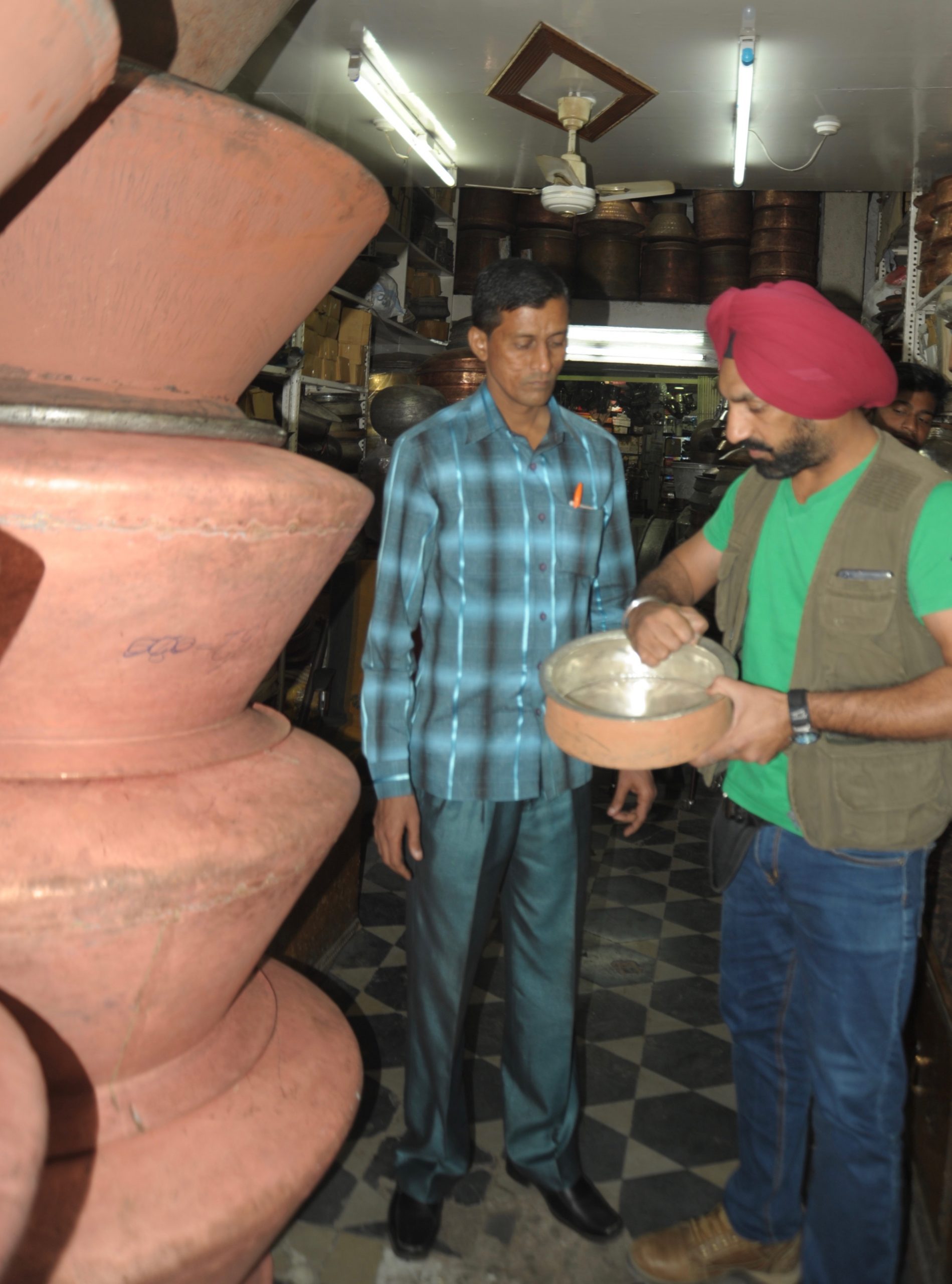
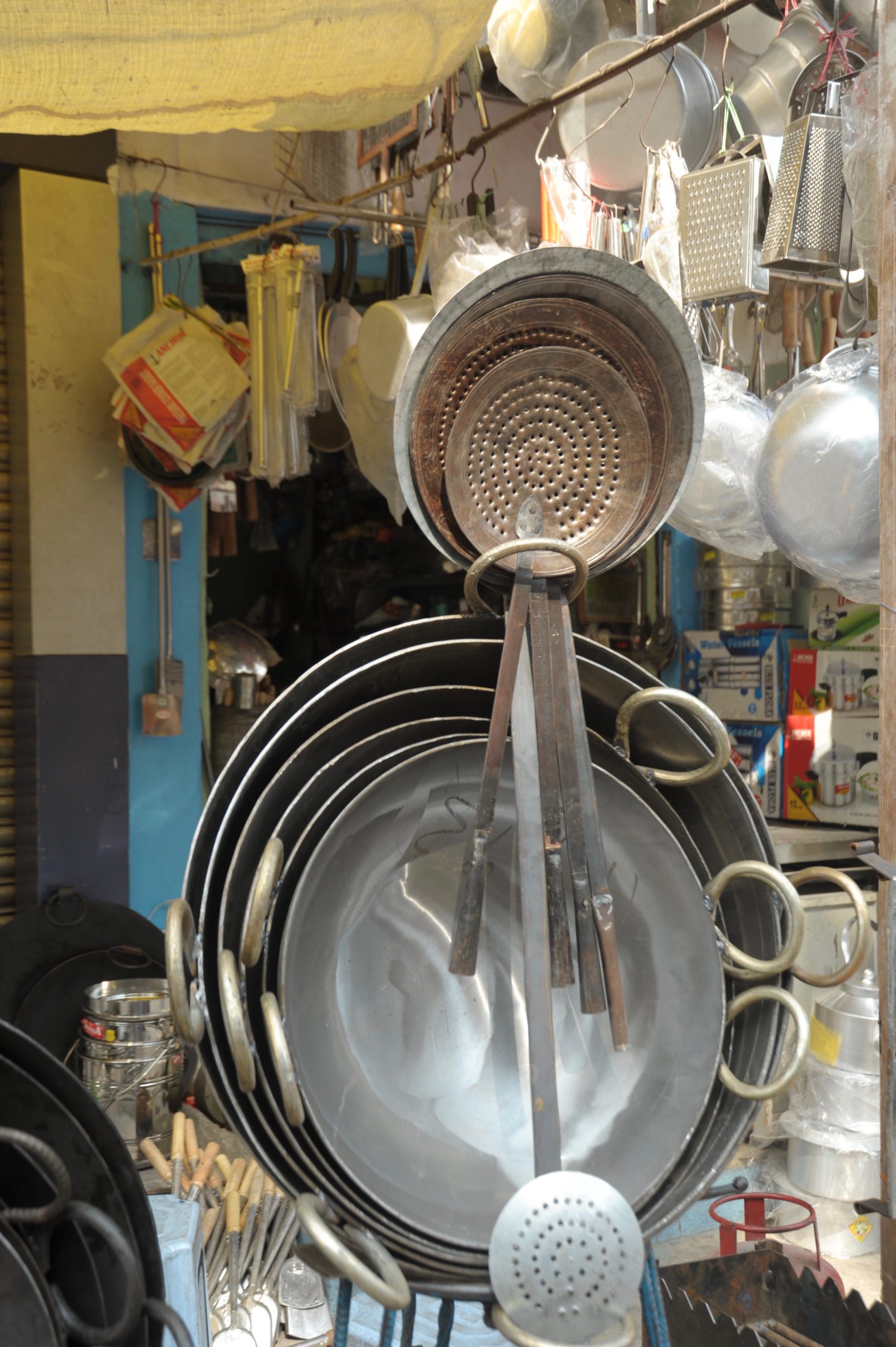
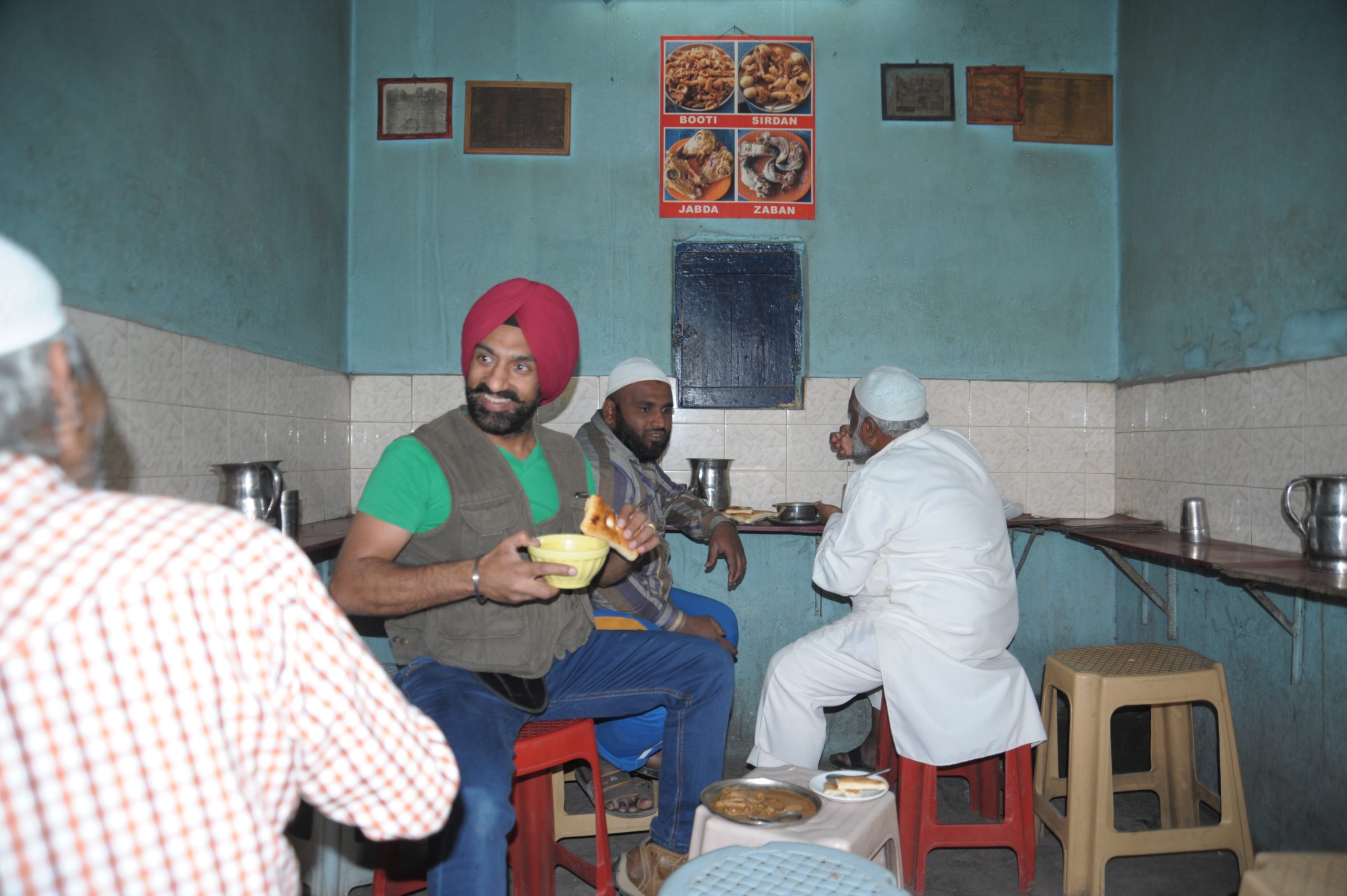
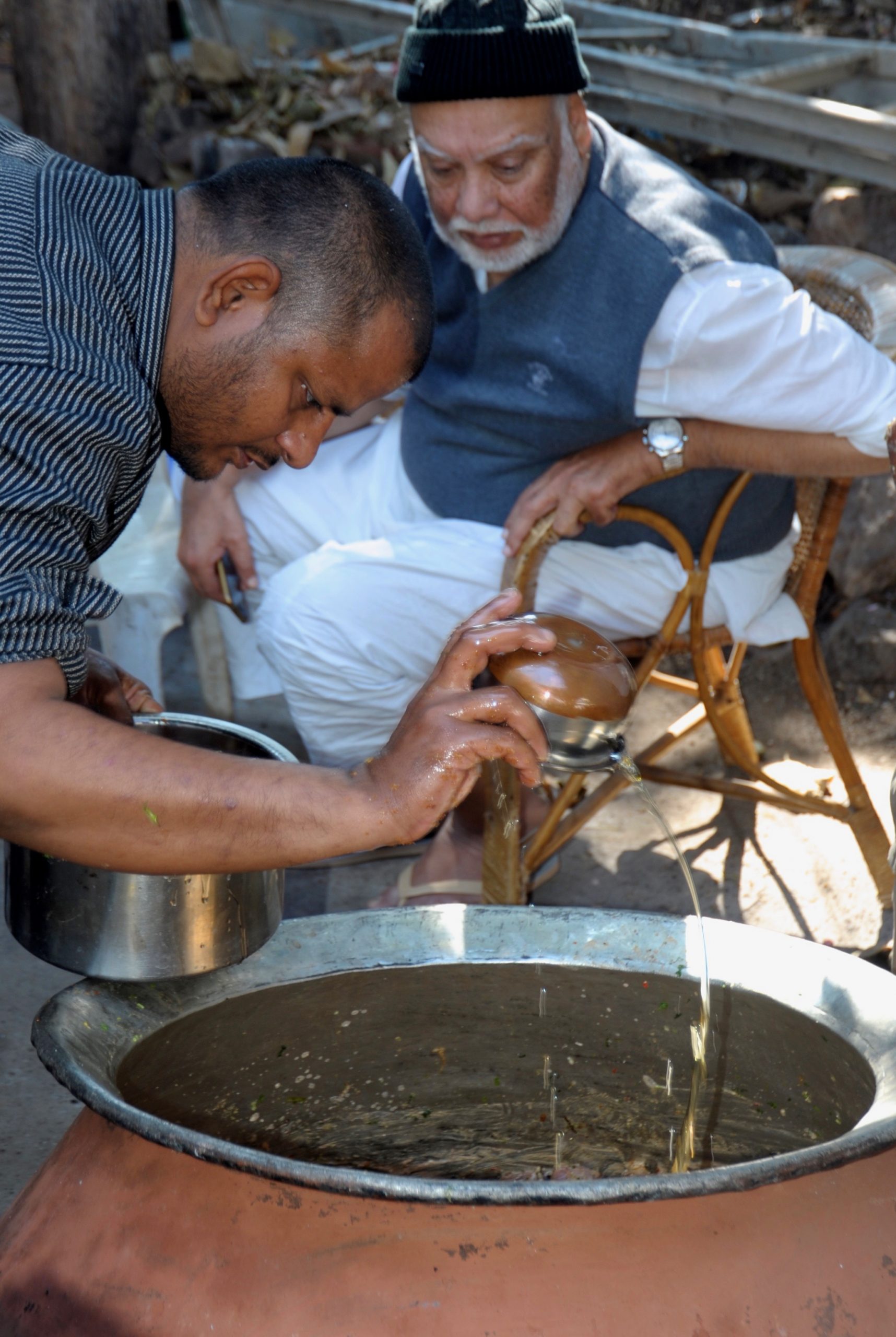
The menu we went about doing here was:
- Khatta Murgh – Yogurt based chicken preparation, cooked in an oven.
- Bhagare Baigan – Tempered baby eggplants.
- Mirchi ka Saalan – A spicy thin curry of Hyderabadi chilies, soured by tart tamarind.
- Sofyani Biryani – Sofyani meaning white, Biryani which is totally white as a pearl.
- Osmani Khorma – A saffron tinted mutton preparation, named after Osman Ali khan, one of the most successful rulers of the Asafjahi Dynasty.
- Murtabakh – A layered pastry of mutton and bread, cooked on dum, truly an Iranian influence on this Nawabi heritage and cuisine.
My coming to the city of food would have been incomplete without having spent time and being guided by so called the Giant of Hyderabadi cuisine, Nawab Mehboob Alam Khan, lovingly called Baba by close associates and friends, and so did I also start to address him respectfully as Baba.
To my surprise only on calling him up on the phone, he came up to meet me at The Taj Krishna, at the start of my culinary journey to explore the secrets and exclusivity associated with this cuisine. Indeed, a very humble and intense genteel expressions shown by him won my heart. It is difficult to believe the existence of such a simple soul with his fame in today’s world.
There is nothing that he hasn’t possessed, from fame to riches, but one thing that he loves is getting emotional and involved with the rich culture and tradition of Nawabi food. Baba hails from Afghan, he has an immense understanding of the influences of varied cultures on Hyderabadi cuisine. He has certainly been a great inspiration for many.
A very widely travelled personality, yet he is always on the lookout for the styles of cooking and respects it in other parts of the world as well. It so feels that because of the presence of the Nizami cuisine which is still alive today in Hyderabad.
I believe that eating out in the restaurants in the city is in no way comparable of the royal cuisine, as most are commercialised. To enjoy and be exposed to the real experience of dining, one needs to be very fortunate to be invited to Baba’s home for dinner. It so happened that I was invited, and since then I would spend every evening in Baba’s kitchen until the last day in Hyderabad. One would be surprised to see his passion and until date he prefers cooking food on dum and using firewood and coal as fuel when possible. He prefers to source butchery himself or guides his cooks on the art of selecting the right cut for the dish. It’s a great sight to observe him perform when he gets mesmerised in it.
The delicacies cooked by him the day I was invited were:
- Marag – An Arabic soup consumed during Ramzan, extract of lamb trotters, deftly spiced.
- Haleem – Again consumed during Ramzan, a mutton and wheat preparation, blended together and flavoured with aromatic spices.
- Raan – Leg of a kid, so tender and so very subtle spiced, cooked on dum in a lagan.
- Sofyani gosht biryani – Mutton biryani, so very flavourful, yet without any saffron.
- Bhagare baigan – The best ever had, Mrs. Khan, wife of nawab sahib, prepared this dish for us, I was told that she is an equally a wonderful craftsperson, cooks only with her “andaaz”, approximation.
- Gajar ka halwa – A very rich carrot dessert, I was tempted to have it though I had no capacity for the same.
One of the following day, I was invited to a typical breakfast meal:
- Math ki bhaji, andey – Math is a green leafy vegetable like the spinach, cooked with eggs.
- Khagina – fried egg with a little difference, egg perched on masalas.
- Kheema – mutton mince, spiced with chilies and coriander
- Khichadi – Red masur lentils and rice preparation with desi ghee, papadums and pickles.
On one of the Sundays, Baba took us to his farm house in Vikarabad, close by in the countryside. Here he has a charitable kitchen every Sunday & he offers food to the village folk and the children. Food is cooked in big “deg’s” which are large caldrons of food. On returning from the farmhouse, we stopped at this crowded tea stall to have “burkha-wali chai”, burkha, being topped with milk-cream and “khada chamcha” loads of sugar in a cup of tea. That was something!
Boarded the train to Goa on a happy note.
Overall a very successful culinary journey with lots of learning and practical exposure.
